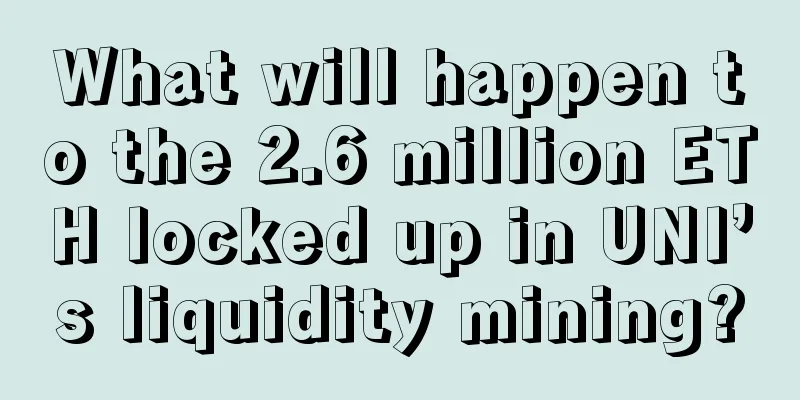3 Reasons Onename Switched from Namecoin to Bitcoin

|
For many decentralized application developers, applying blockchain to online identification and authentication is an important direction, and Onename is a trendsetter in turning this idea into reality. The authentication platform co-founded by Ryan Shea and Muneeb Ali initially used the Namecoin blockchain to store user data, but the company recently switched to the Bitcoin blockchain (through Blockstore). Shea and Ali recently accepted an interview with Epicenter Bitcoin, and Ali said that we are one of the largest production systems built on Namecoin, but we began to notice some specific limitations. Muneeb Ali went on to explain the three major limitations the company saw with Namecoin, which ultimately led them to develop Blockstore and move to Bitcoin. 1. There are a lot of junk registration information on the Domain Name Coin networkThe first problem Ali pointed out during the interview was related to the way new users are registered on Namecoin. Ali explained that the pricing strategy was set when Namecoin was first launched, and it lacked the flexibility required for a decentralized domain name registration system: "At launch, the pricing was set to be constant, so you could buy a domain name very cheaply. There was no flexibility in the pricing. As a result, there were a lot of junk registrations on Namecoin. There was a paper written by Princeton professor Arvind that analyzed how much junk registrations there were, and I think it must be astonishing. I estimate that less than one percent of .bit domain names are mapped to something meaningful." 2. Namecoin’s development community is smallAlthough Ali is very grateful and supportive of the efforts made by the Namecoin development community in the past few years, he also admits that due to the lack of surrounding infrastructure, Namecoin is difficult to sustain as a basic protocol. “Because Namecoin is an older fork, it has not kept up with the development of Bitcoin and the software is not as stable as Bitcoin. The developer community of Namecoin is much smaller than that of Bitcoin. There are so many companies and so many block producers or APIs that, just from an engineering perspective, it is more affordable to be behind a well-maintained and fast-growing ecosystem.” 3. Centralization of Namecoin MiningThe third issue Ali pointed out during the Epicenter Bitcoin interview was related to security, which is a cloud hanging over many altcoins. Namecoin uses the same hashing algorithm as Bitcoin (SHA-256), and it can be mined simultaneously with Bitcoin (dual mining). During the interview, Ali explained the issue of dual mining Namecoin with Bitcoin: “The third reason is a security issue. We found that Namecoin can be mined on different chains from Bitcoin, so in theory, some miners can mine two cryptocurrencies at the same time because they calculate the same hash and get rewards from two different chains. Dual mining is actually very difficult because if miners don’t have enough incentives - that is, the coin value is not large enough, or they run Namecoin nodes and the cost of integrating dual mining is too high, they think it’s not worth it relative to the reward.” While in theory, dual mining with Bitcoin is helpful for the security of the other blockchain, Ali believes that this is not the case with Namecoin: “So, actually one miner, F2Pool, ended up with more than 60% of the hash power on Namecoin. This is a well-known fact. The Namecoin community knew about this and they tried to find the key to the problem. But for us, it seems that if you are on the Bitcoin main chain, the blockchain security connected to financial infrastructure and financial capital is higher. So many people are worried that if one miner has close to 51% of the mining power, many people will try to do some opportunistic things. However, on Namecoin, this situation has lasted for months, and so far, the community has been unable to do anything.” There are still many fans of competing blockchains in the Bitcoin space, but this is a vivid example of how many competing use cases for blockchains eventually return to Bitcoin. This trend is becoming more and more obvious with the development of sidechains, but it is still worth watching to see whether the double mining problem that occurred on Namecoin will also occur in other cases. Many Bitcoin supporters believe that only one cryptocurrency is needed on the network, but whether this assumption is true remains to be tested. Original article: https://www.coingecko.com/buzz/3-reasons-onename-switched-from-namecoin-to-bitcoin |
<<: SEC Sues Bitcoin Mining Company GAW Miners
>>: Bloomberg Publishes Metadata White Paper Using Distributed Ledger Technology
Recommend
See if you are a lucky woman
1. Philtrum and nasolabial lines If a woman has a...
Dash mining machine can actually mine Bitcoin! The profit exceeds mining Dash?
Introduction: Dash has many advantages. It can tr...
Which people are not suitable to be salesmen?
Salesman is a popular profession nowadays, with h...
Why did OKEx avoid the network outages on the 19th and 24th?
Wu said author | Colin Wu Editor of this issue | ...
Which facial features are most suitable for being an official? Which facial features are most suitable for being an official?
By looking at a person's face, you can tell w...
Bitcoin briefly hit $20,000 before falling back, and the strong dollar continues to "suppress" the crypto market
In the past 24 hours, the US dollar index took a ...
Focus on enjoying life
When it comes to life, in fact too many people ar...
What does a mole on the left back of a man's neck mean?
People say that moles can affect people's lov...
Is it good for a woman to have the character "川" between her eyebrows? What is fate?
This kind of situation often occurs around us: som...
The operation mode and significance of gas fees in the Filecoin network
Professionalism and focus, win-win cooperation Th...
How to read a man's eyebrows
Eyebrows are the most important of the five facia...
What kind of women are destined to be rich and noble? Are you one of them?
Comparing yourself to others will only make you f...
The first Bitcoin mining machine Avalon is launched, opening a new era of mining
In January 2013, Avalon released the specificatio...
Is it good for a girl to have a broken palm on her right hand? What will happen if a girl has a broken palm on her right hand?
What we often call a broken palm refers to the in...
How to ensure asset security when exchanges are clearing out mainland users?
Since September 24, 2021, when ten ministries and...









